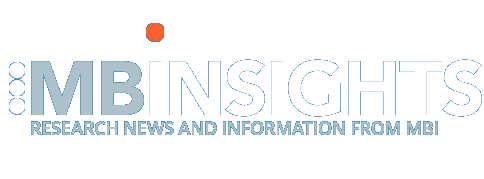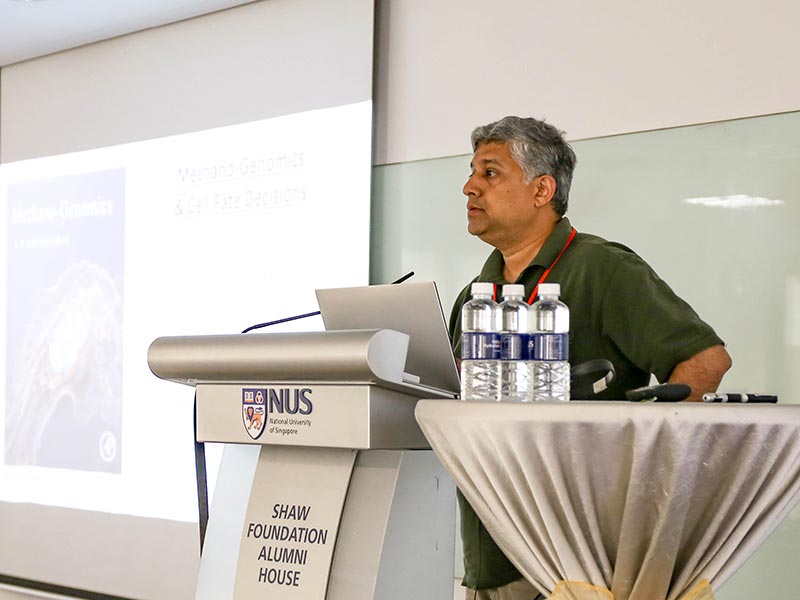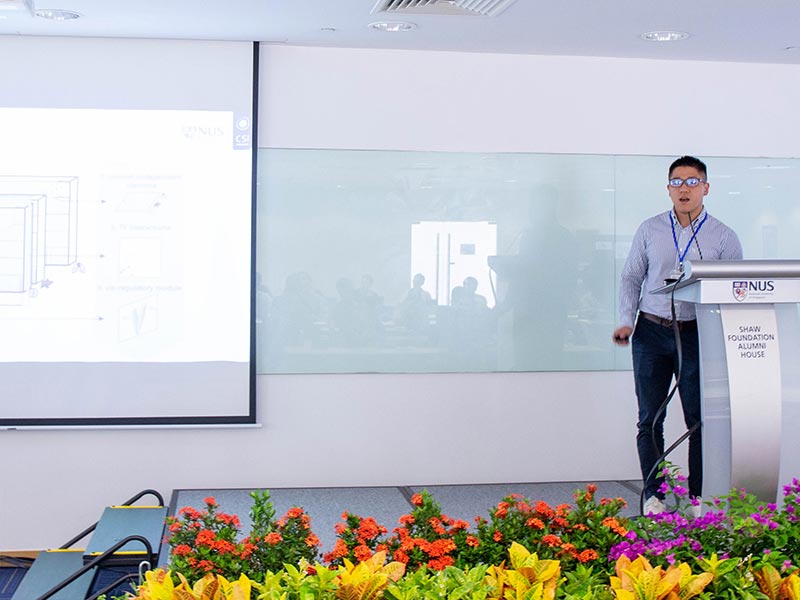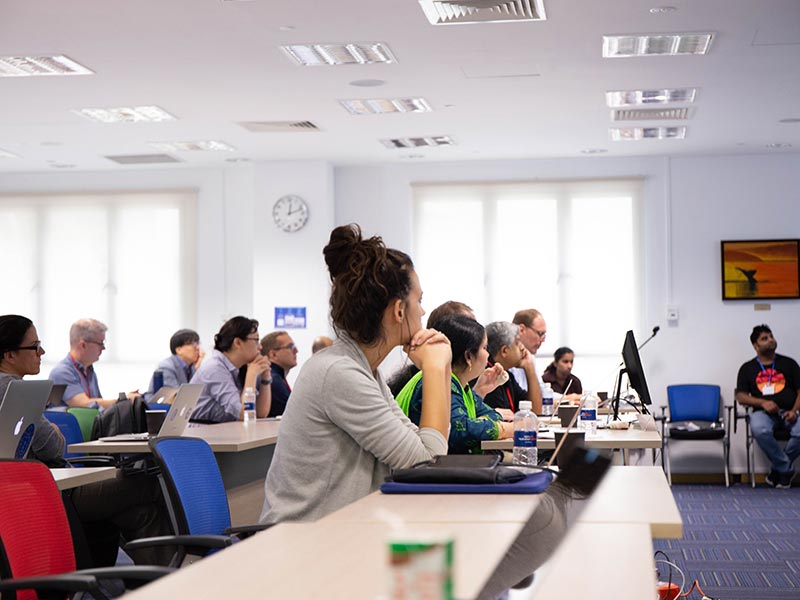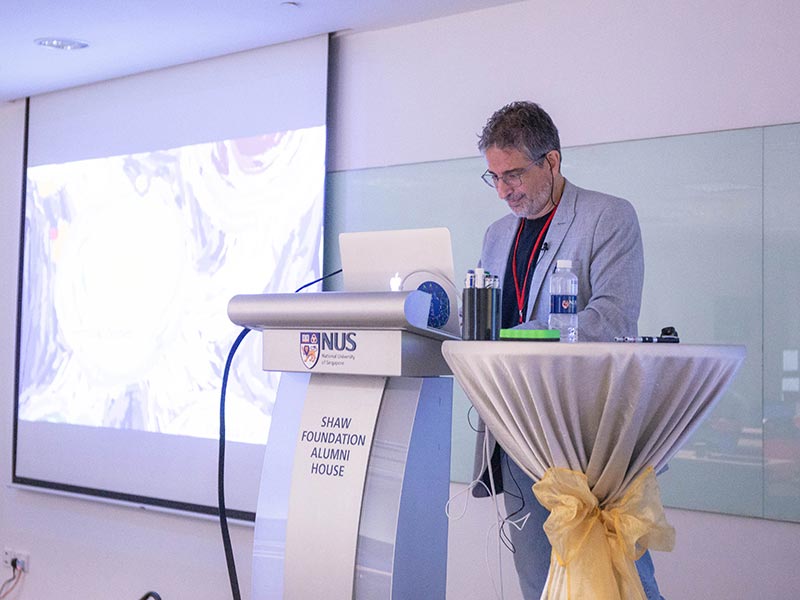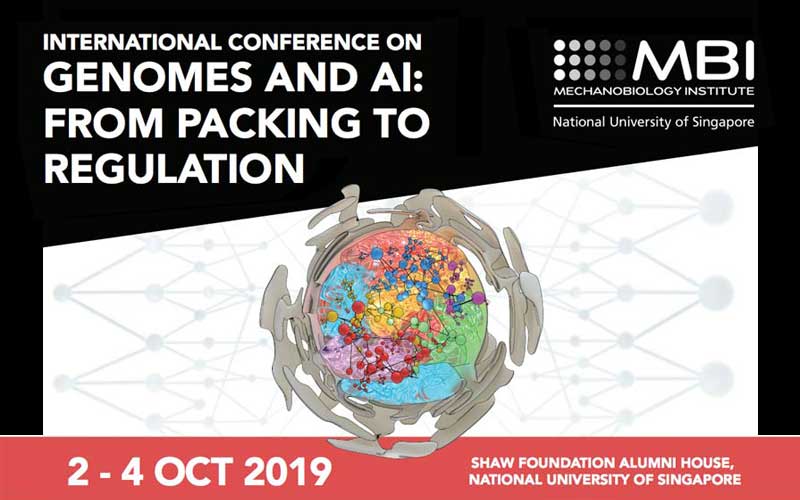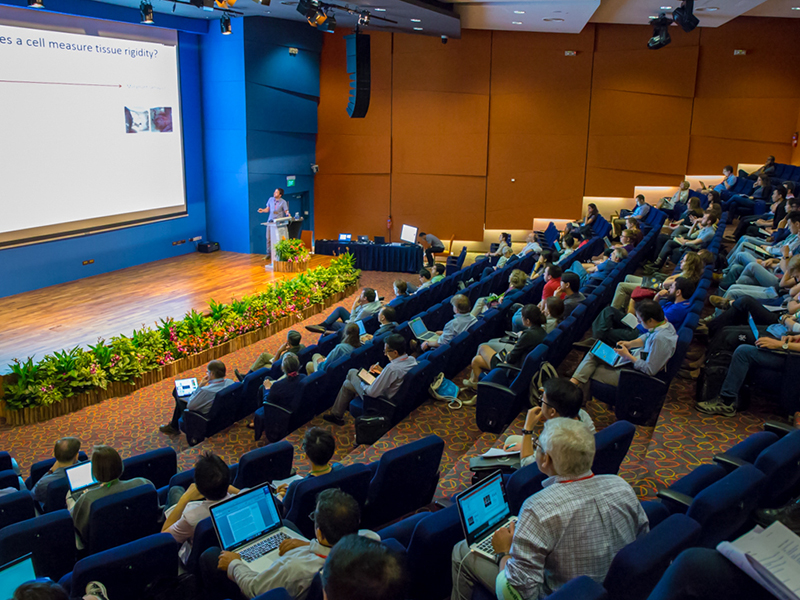International Conference on Genomes and AI: From Packing to Regulation: Post-event report
SRUTHI JAGANNATHAN | NOV 2019
The ‘International Conference on Genomes and AI: From Packing to Regulation’, co-organized by Professor G.V. Shivashankar of the Mechanobiology Institute and Professor Caroline Uhler of the Massachusetts Institute of Technology, was held on 2-4 October, 2019 at the Shaw Foundation Alumni House, National University of Singapore. The 3-day meeting sought to create a common platform for scientists, industry experts, and students at the crossroads of genome biology and machine learning, to share ideas and innovations, and to facilitate fruitful discussions on how AI-based tools could be used to spur research in biological sciences.
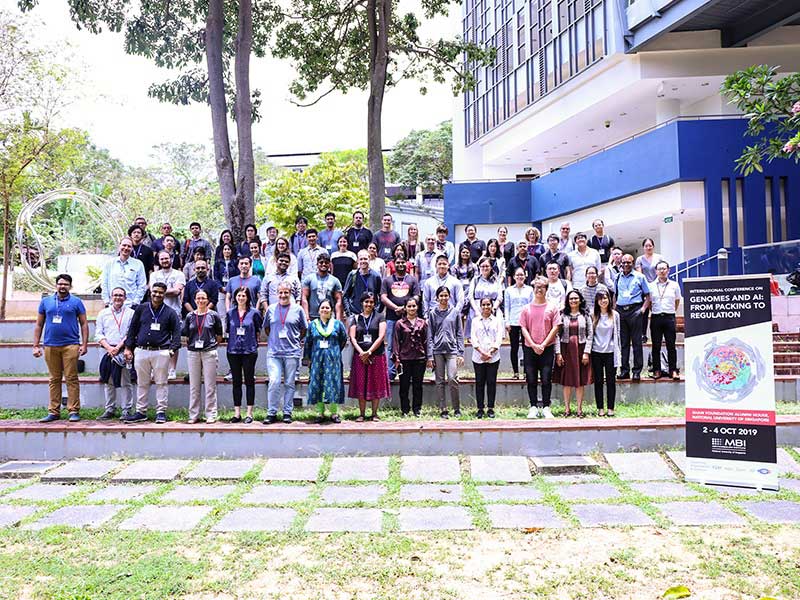
Participants of the AIGENOME conference
Technological advancements in the field of cell and molecular biology have led to a massive inflow of data, including imaging, DNA sequencing, gene expression, or subcellular localization data. Complex tools are necessary to sift through this humongous pile of data and analyze it for important findings. With the current AI wave sweeping over the innovation industry, latest machine learning techniques have been applied to revolutionize workflows across the healthcare industry as well; scientists working at the interface of biological and computational sciences are building complex algorithms that can rapidly and accurately parse vast data to reveal meaningful patterns, creating a new generation of diagnostic and prognostic platforms that are highly sensitive and reliable.
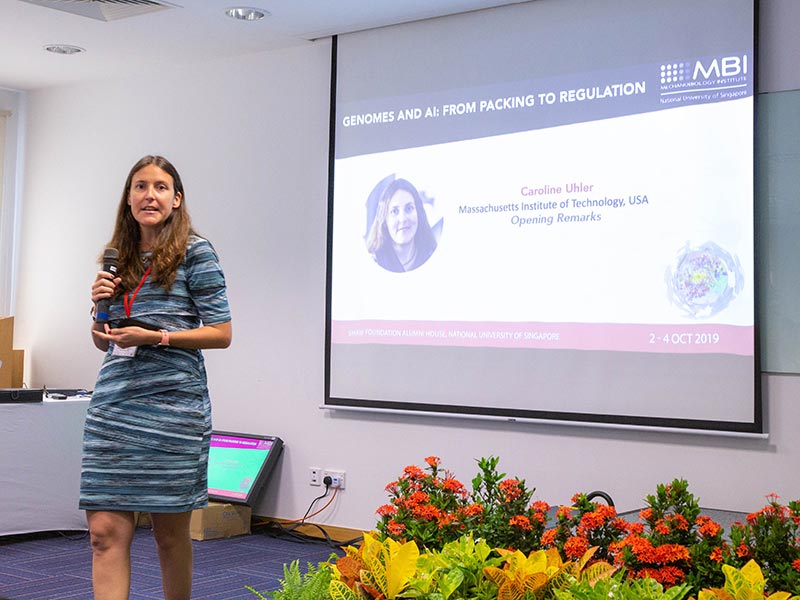
Welcome Address by Conference Co-organizer, Professor Caroline Uhler
With a diverse audience gathered for the conference, the presentations, which included 17 long and 12 short oral presentations revolved around one common, underlying theme: how breakthrough technologies in machine learning have impacted studies in genome biology – both by accelerating the pace as well as improving the quality of research in the field. In essence, the presentations addressed how machine learning and computational modeling tools are being applied to understand structural organization and functions of biological components at different levels – nuclear, single-cell, and tissue levels.
At the nuclear level, complex algorithms are being used to detect variations in chromatin packing and linking this variation to differences in transcriptional potentials in cells, and novel diagnostic tools that look for changes in chromatin packing have enabled computational differentiation of normal cells from diseased cells such as cancer cells. Within the single cell, it is now possible to track molecular networks and biological pathways – over short and long time frames – and use custom software to analyze how they control cell behavior such as differentiation patterns or cellular response to therapeutic interventions. At the tissue organization level, computational analyses of high throughput sequencing and imaging data have allowed researchers to further understand how cell types are established, how single cells spatially organize into tissues, and how tissues integrate biochemical and mechanical signals to function properly.
Discussions on the various topics continued beyond the presentations and into the poster sessions. Around 32 posters were on display, providing a platform for students and early career scientists to showcase and communicate their research to the wider scientific community. Towards encouraging these aspiring scientists to take initiative in presenting their research in future conferences, two oral presentations – by Saradha Venkatachalapathy (Mechanobiology Institute, National University of Singapore) and Winston Koh (Molecular Engineering Lab, Singapore) – and a poster presentation – by Aditnarayan Radhakrishnan (Massachusetts Institute of Technology, USA) – were chosen for best presentation awards. The conference also provided ample networking opportunities in the form of coffee breaks, long lunch sessions, and a welcome reception, where the participants could discuss science, set up future collaborations, and build new friendships.
Overall, the Genomes and AI Conference – one of the very first initiatives in this niche area of science – proved to be a great platform not only for discussing what has been achieved in the field so far but also for laying out ideas and envisioning a roadmap for how research could be advanced in the future.

